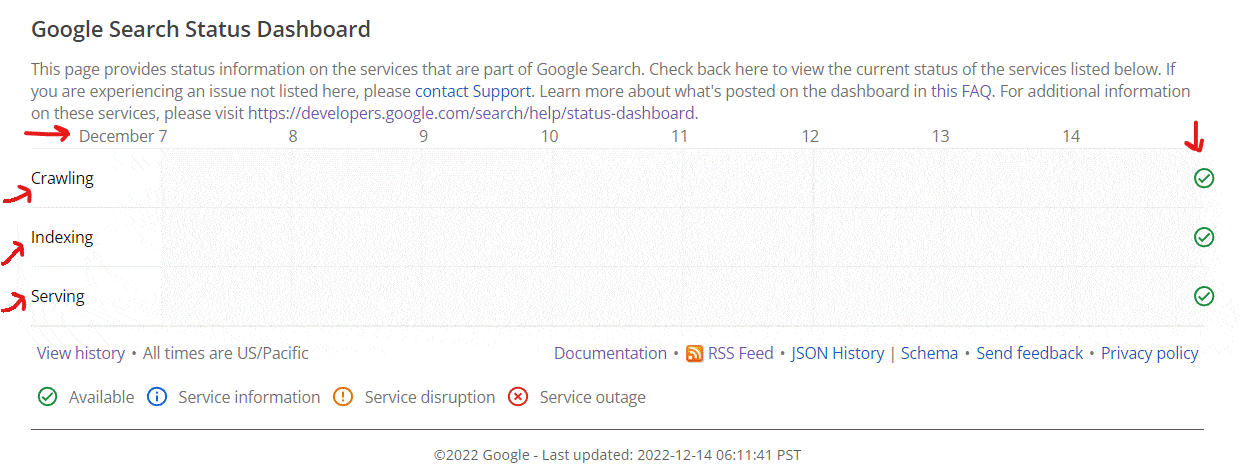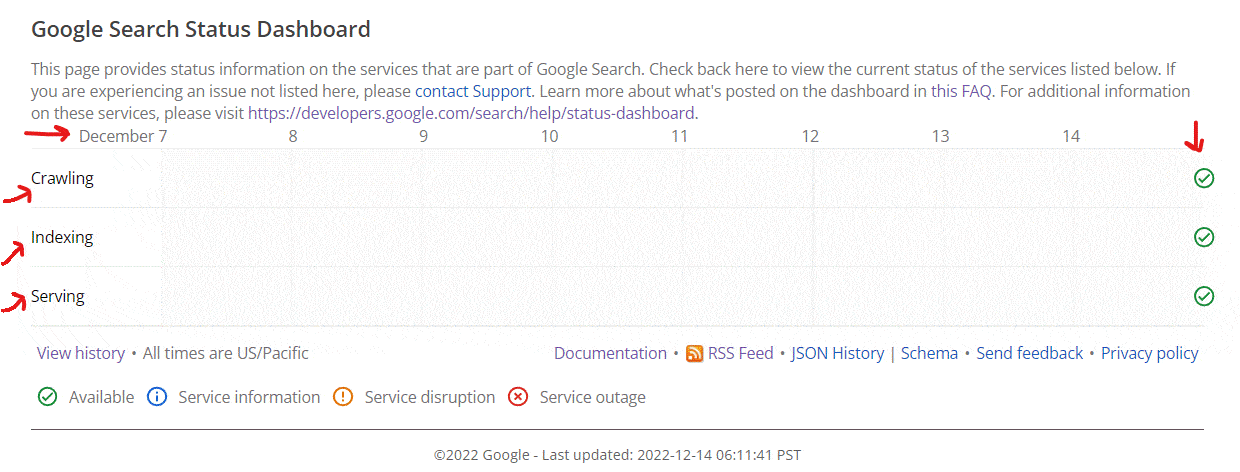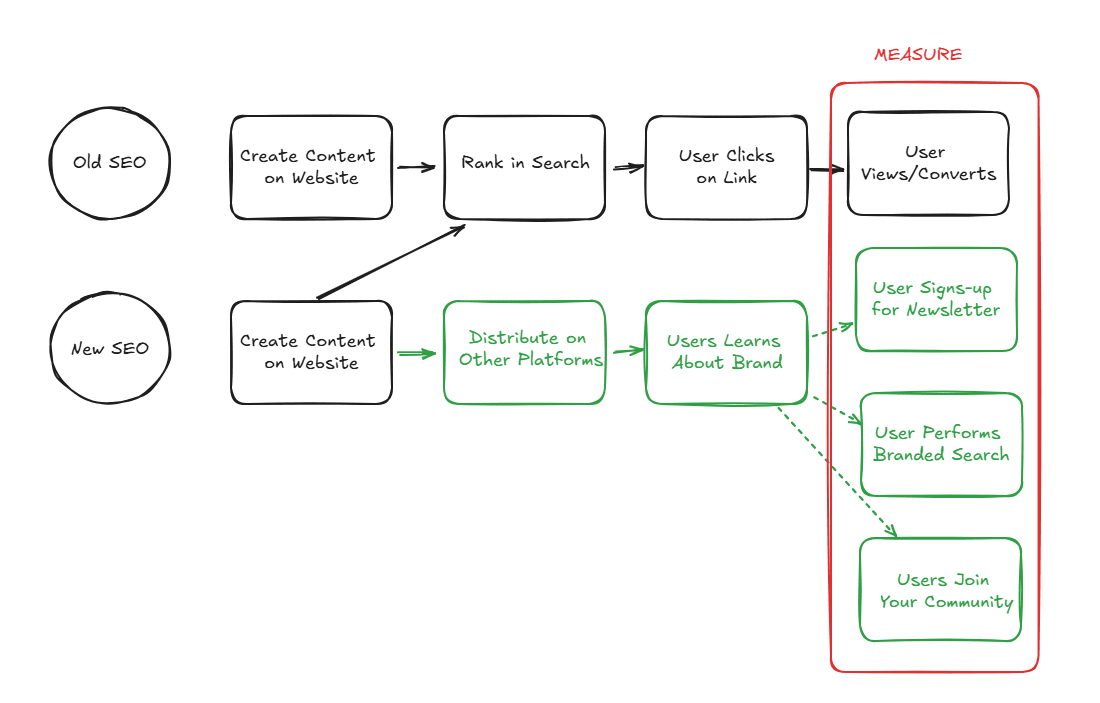How to use Google Status Dashboard

Google just released a new tool called "Google Search Status Dashboard" to help SEOs understand more about what's happening on the Google systems side (what we previously called google updates are now called google systems). As per documentation, the tool is for:
You can access the tool here.
The SEO Riddler Newsletter
Join the newsletter to receive the latest updates in your inbox.
What is the Google status dashboard?
The dashboard is a way for Google to communicate when there's an issue on their end that maybe impacting your website. This is definitely more useful and a faster way to get information about what's going on with Google search than the Google Search ranking updates resource and the Data anomalies in Search Console report.
How to use the Google Status Dashboard?
When the Google search relations team detects a widespread issue, they'll update this dashboard for you, so you can understand what's happening.
Here's a screenshot of the dashboard right now, notice the date, the type of issues that can be reported, the the status:

The status in the screenshot represented with the green tick shows that at the moment, crawling, indexing and serving functionalities are up and running as usual with no issues.
This green tick can change to any of the following statuses:

Here's what each of those statuses means:
- Available: up and running as usual
- System information: There's been an update or change to a system. Something changed in the way the system is working. An example of this is when Googlebot started crawling over HTTP/2, a feature that was not previously supported.
- System disruption: Websites may experience degraded system performance due to a common third-party (for example, DNS servers).
- System outage: The system isn't functioning to a large extent, and the issue is affecting a large number of sites or users.
So if your website is experiencing an issue, and you want to check if that's part of a widespread issue, this dashboard is your place to check. This dashboard will not be helpful for you though, if the issue your website is facing is not a widespread issue or is impacting a limited number of websites.
Next steps:
Make sure you bookmark the following URLs:
The SEO Riddler Newsletter
Join the newsletter to receive the latest updates in your inbox.



